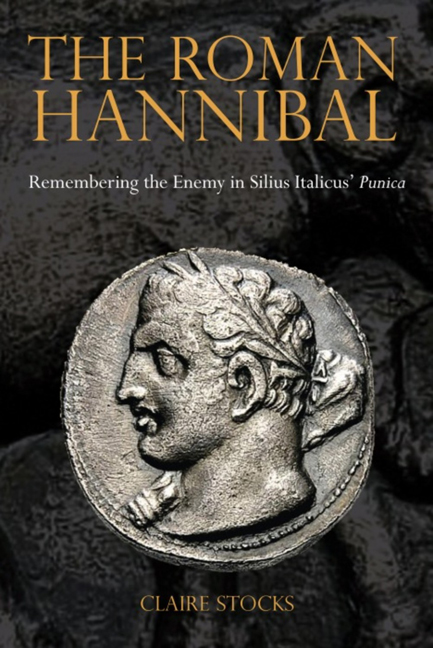Book contents
- Frontmatter
- Contents
- Acknowledgements
- Texts and Translations Used
- Introduction: Silius Italicus and the Roman Hannibal
- Chapter One The Roman Hannibal Defined
- Chapter Two Before Silius: The Creation of the Roman Hannibal
- Chapter Three Silius' Influences
- Chapter Four Epic Models
- Chapter Five Silius' Roman Hannibal
- Chapter Six Out of the Darkness and into the Light
- Chapter Seven Hannibal's Decline after Cannae: Separating Man from Myth
- Chapter Eight Imitators and Innovators
- Chapter Nine Band of Brothers
- Chapter Ten The ‘Lightning Bolts’ (Fulmina) of War
- Chapter Eleven The Man and his Myth: The Self-Defined Roman Hannibal
- Conclusion: The Crossing of the Worlds: The Move from Internal to External Narrative
- Bibliography
- General Index
- Index locorum
Conclusion: The Crossing of the Worlds: The Move from Internal to External Narrative
- Frontmatter
- Contents
- Acknowledgements
- Texts and Translations Used
- Introduction: Silius Italicus and the Roman Hannibal
- Chapter One The Roman Hannibal Defined
- Chapter Two Before Silius: The Creation of the Roman Hannibal
- Chapter Three Silius' Influences
- Chapter Four Epic Models
- Chapter Five Silius' Roman Hannibal
- Chapter Six Out of the Darkness and into the Light
- Chapter Seven Hannibal's Decline after Cannae: Separating Man from Myth
- Chapter Eight Imitators and Innovators
- Chapter Nine Band of Brothers
- Chapter Ten The ‘Lightning Bolts’ (Fulmina) of War
- Chapter Eleven The Man and his Myth: The Self-Defined Roman Hannibal
- Conclusion: The Crossing of the Worlds: The Move from Internal to External Narrative
- Bibliography
- General Index
- Index locorum
Summary
The Roman Hannibal does not die in the Punica. He lives on and beyond Silius’ text, becoming the subject of edgy parody for authors such as Juvenal, and remains as captivating a figure today as he was once to Rome. This book stops with Silius, however, since it is in his epic more than any other text that we see so comprehensive a reading of what Hannibal meant to Rome.
The potency of Hannibal as a name and exemplum for Rome is felt throughout Rome's literature, irrespective of genre. This canon of Hannibal narratives provides the points of influence and platform on which Silius can build his Roman Hannibal, juxtaposing instances of his stereotyped bestiality and transgression with human frailty and exemplary military prowess. Polybius and Livy provided historiographical readings of Hannibal as the greatest external threat Rome had faced. Ennius and Horace gave Hannibal a poetic voice, with Horace creating the dirus Hannibal that would be a point of reference for Hannibal and his archetypal monstrosity thereafter. Cicero and Valerius Maximus used the Carthaginian as an exemplum, an individual who was both an inversion of Romanitas and a model for Rome's uiri. These authors, and others, created the literary tradition which is at the heart of Silius’ re-reading of the Hannibal mythology, and phrases such as ad portas (e.g. 10.265) are reminders of their presence throughout the Punica. Yet Silius’ Hannibal exists beyond these precedents, rooted also in the exempla of the epic tradition. Models such as Virgil's Aeneas and Lucan's Caesar legitimise Hannibal's position as an epic hero and above all as a hero in the Roman mould, embracing Jupiter's vision for Romanitas as presented in Punica Book 3 and offering an exemplum for Rome on how to wage a war. In doing so, Silius’ Hannibal emerges not only as the ‘other’ in which Rome sees a reflection of itself, but as a figure at times more Roman than the state's own uiri.
That the Punica is first and foremost an epic is evident from the start as we see Hannibal initiated into a world of myth and darkness – the fulfilment of a Virgilian legacy of revenge with Dido and Juno as the overt and subverting influences in his life.
- Type
- Chapter
- Information
- The Roman HannibalRemembering the Enemy in Silius Italicus’ Punica, pp. 231 - 234Publisher: Liverpool University PressPrint publication year: 2014

